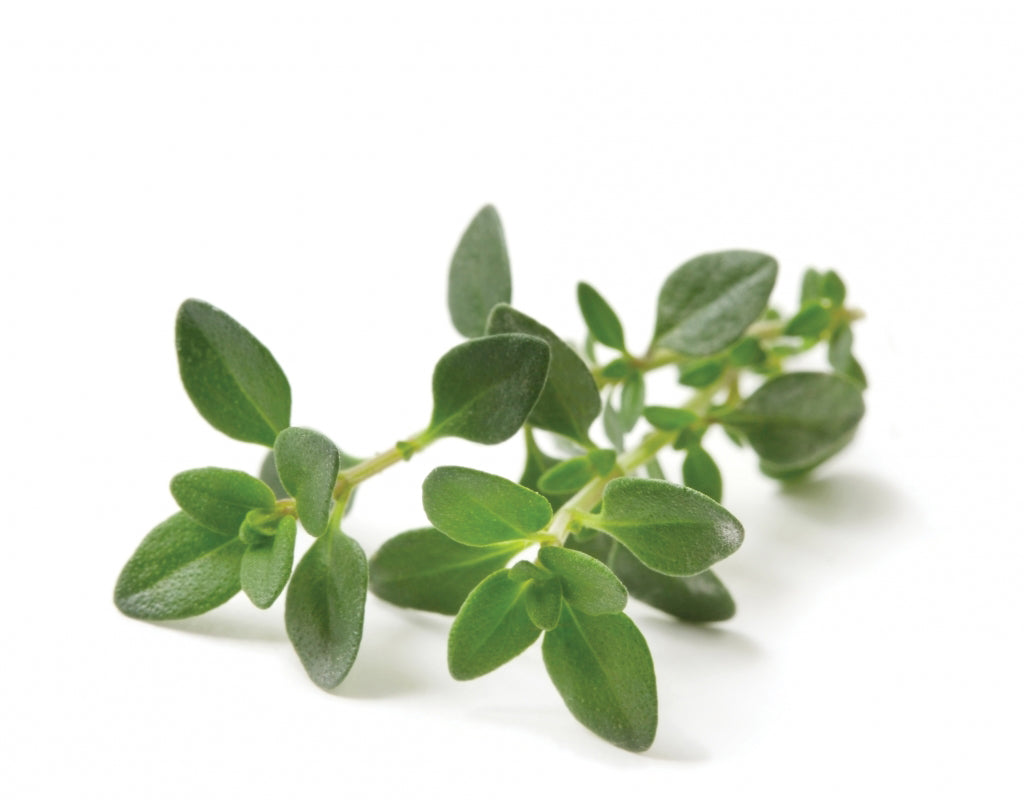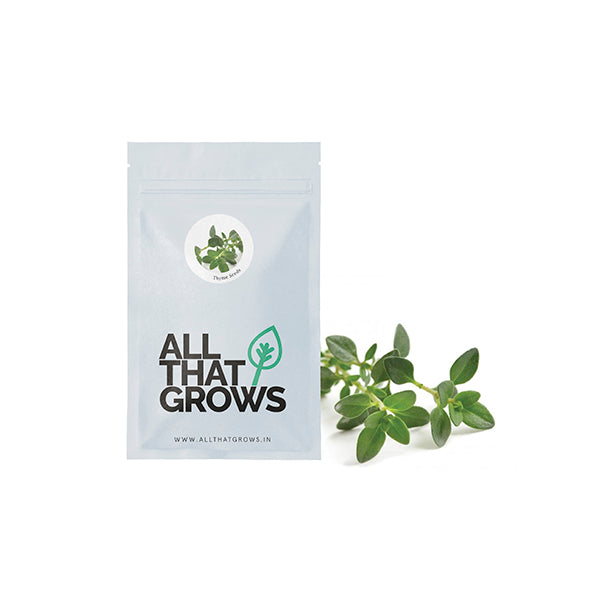



- SOWING
TIMEFebruary to April
- Sowing
Distance30 cm plant to plant
- Fruit
WeightN/A
- Fruit
ShapeN/A
- Days to
maturity150-180 days after sowing
- Details
- How to sow
- Reviews
Thyme is an aromatic perennial evergreen herb with culinary, medicinal, and ornamental uses. Thyme is a genus of the mint family and a relative of the oregano. Thyme herb is packed with numerous health benefiting phytonutrients (plant-derived compounds), minerals and vitamins that are essential for overall health. One of the popular among the herbs collection, thyme originally is native to the southern Europe and Mediterranean regions. Thyme contains many active elements that known to have disease preventing and health promoting properties. Thyme herb contains thymol, one of the important essential oils that has been found scientifically to have antiseptic, and anti-fungal characteristics. Thyme is packed with minerals and vitamins that are essential for optimum health. Its leaves are one of the richest sources of potassium, iron, calcium, manganese, magnesium, and selenium. Potassium is an important component of cell and body fluids that helps controlling heart rate and blood pressure.
Planting instructions
Sow thyme seed in sterilized growing medium either in shallow rows or scatter on top with little or no covering.
After they take root, have been transplanted to 2- 1/4" peat pots and reach a height of 2-3 inches, they may be moved outside to cooler weather.
For small gardens, space plants about 9 inches apart, for field production space plants 12-18 inches apart in rows 3 feet apart.
Growing Requirements
soil
"Thyme grows well in a light, well-draining soil, poor to fertile. Thyme will grow in a pH range between 6.5 (neutral) and 8.5 (alkaline) with a preferred pH range between 6.5 and 7.0."
spot
Thyme grown outdoors prefers full sun.
temperature
For best results, start seed indoors at a soil temperature of 70°F (20 C)
watering
Average water needs. Water on a regular schedule. Allow soil to go completely dry between watering, then soak thoroughly.
how to harvest
Harvest thyme just before the flowers begin to open, by cutting the plant one and a half to 2 inches from the ground.
A second growth will develop but this should not be cut at all.
This would reduce the plant’s winter hardiness.
Although a hardy perennial, thyme plants need care over the winter months to survive the cold.

Customer Reviews
The productiveness of any seed we sell is subject to your local climatic conditions*, the sowing method you adopt, and your commitment to the planting process. We give no warranty, expressed or implied, and are in no way responsible for the produce.
Please note that all our seasonal recommendations/ sowing information is as per the local climatic conditions. *For more information on the optimum conditions required for growing seeds in your region, please contact us at, hello@allthatgrows.in or Whatsapp us at, +91 8544865077
Questions & Answers
Have a Question?
Be the first to ask a question about this.




Thyme Seeds
Seed Type : Non-Hybrid, Open Pollinated and Non-GMO
Flavor : Pleasant, pungent, and clover flavour
Leaf character : Evergreen with thin leaves
No. of cuttings : Leaves can be harvested all year round and can be used without drying
Grow this with
Thyme is an aromatic perennial evergreen herb with culinary, medicinal, and ornamental uses. Thyme is a genus of the mint family and a relative of the oregano. Thyme herb is packed with numerous health benefiting phytonutrients (plant-derived compounds), minerals and vitamins that are essential for overall health. One of the popular among the herbs collection, thyme originally is native to the southern Europe and Mediterranean regions. Thyme contains many active elements that known to have disease preventing and health promoting properties. Thyme herb contains thymol, one of the important essential oils that has been found scientifically to have antiseptic, and anti-fungal characteristics. Thyme is packed with minerals and vitamins that are essential for optimum health. Its leaves are one of the richest sources of potassium, iron, calcium, manganese, magnesium, and selenium. Potassium is an important component of cell and body fluids that helps controlling heart rate and blood pressure.
Seed Type : Non-Hybrid, Open Pollinated and Non-GMO
Flavor : Pleasant, pungent, and clover flavour
Leaf character : Evergreen with thin leaves
No. of cuttings : Leaves can be harvested all year round and can be used without drying
- SOWING
TIMEFebruary to April
- Sowing
Distance30 cm plant to plant
- Fruit
WeightN/A
- Fruit
ShapeN/A
- Days to
maturity150-180 days after sowing
Planting instructions
Sow thyme seed in sterilized growing medium either in shallow rows or scatter on top with little or no covering.
After they take root, have been transplanted to 2- 1/4" peat pots and reach a height of 2-3 inches, they may be moved outside to cooler weather.
For small gardens, space plants about 9 inches apart, for field production space plants 12-18 inches apart in rows 3 feet apart.
Growing Requirements
soil
"Thyme grows well in a light, well-draining soil, poor to fertile. Thyme will grow in a pH range between 6.5 (neutral) and 8.5 (alkaline) with a preferred pH range between 6.5 and 7.0."
spot
Thyme grown outdoors prefers full sun.
temperature
For best results, start seed indoors at a soil temperature of 70°F (20 C)
watering
Average water needs. Water on a regular schedule. Allow soil to go completely dry between watering, then soak thoroughly.
how to harvest
Harvest thyme just before the flowers begin to open, by cutting the plant one and a half to 2 inches from the ground.
A second growth will develop but this should not be cut at all.
This would reduce the plant’s winter hardiness.
Although a hardy perennial, thyme plants need care over the winter months to survive the cold.



 Sign In
Sign In








